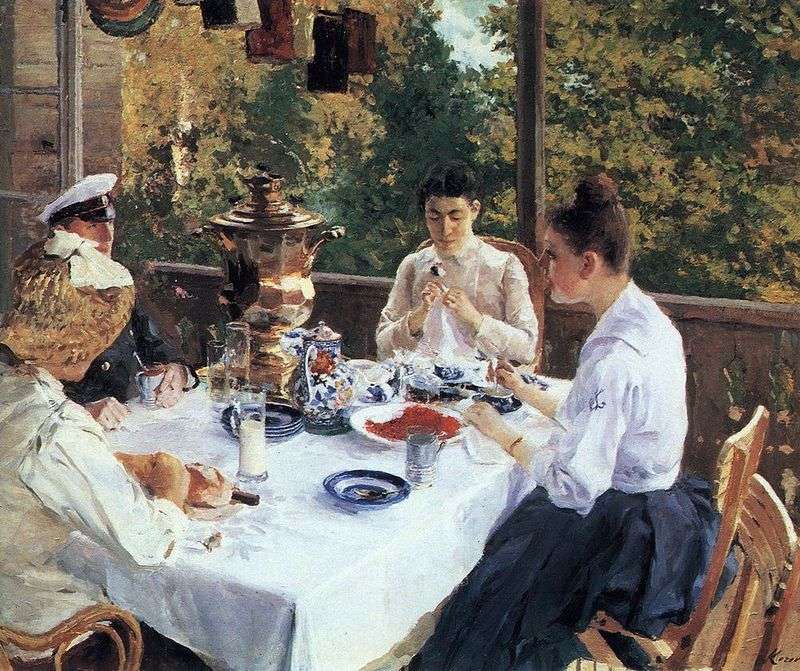
To the first truly impressionistic works of Korovin it is customary to refer, so-called, “zhukov” paintings. The cycle was named after the village of Zhukovka, where the Polenovs’ dacha was located, with whom Korovin was friendly. Here the artist came not only for fresh air, but also to solve important technical problems – Korovin worked a lot on the problem of transmitting the light and air environment.
It should be noted at once that such questions were already raised in the painting of the French Impressionists, and each of them found his own version of this task, as for Korovin, he was closer to Monet’s approach, which placed the surrounding landscape at the head of the corner rather than the human hero.
Polenov’s summer life was stormy and crowded – the hospitable owner gladly met friends, fellows and students. Here visited Nesterov, Serov, Ostroukhov and many other outstanding personalities of his era. All these guests and became the heroes of the “Zhukov” paintings of Korovin.
In the painting “At the Tea Table” the painter portrayed Elena Polenova, Natalia Polenova, her sister, the young artist Maria Yakunchikov and the friend of the family Vyacheslav Ziberov.
At first glance, it is striking, purely impressionistic composition of the composition – the effect of a random frame, invented yet by French companions. The characters were accidentally captured on the canvas – their poses are relaxed and everyone is busy with their work. The center of the composition was deliberately moved to the left, and as if the cropped edge from the same left side was playing a whole story before us. Sitting, they say, the artist at the table, stood up and captured this scene – there and an empty chair slightly pushed aside, as if Korovin had just got up. This is what the painter sought to do – to depict a momentary moment in his realism and dynamism.
This is inherent in many paintings of the Impressionists – to identify the genre of work “At the tea table” is quite problematic. The canvas absorbed only a little bit – the attentive spectator discerns here and features a group portrait, and a genre scene, and a landscape, and a still-life.
The emotional side of the picture is amazingly realized. Each of the participants transmits their atmosphere – a calm mood reigns around Natalia with sewing in hands, in the poses and faces of the others there is a certain tension. Even the circumcised figure of Elena, which is visible to us from the back, eloquently testifies to this.
In his mood and light transmission, Korovin’s painting is very much like the painting of Auguste Renoir.
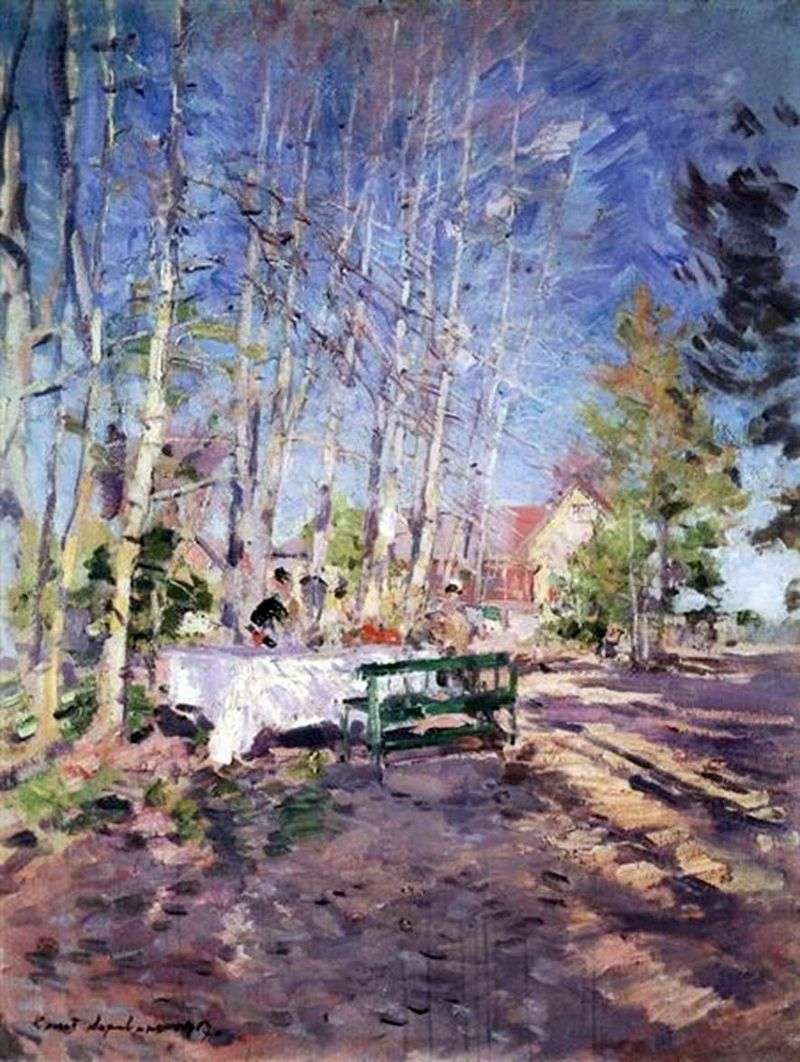 Spring by Konstantin Korovin
Spring by Konstantin Korovin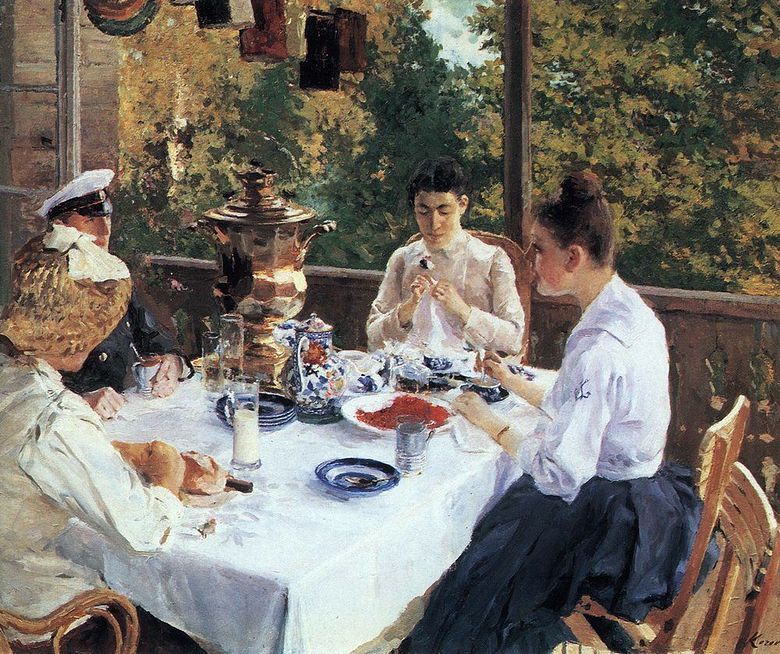 À la table du thé – Konstantin Korovin
À la table du thé – Konstantin Korovin Moskvoretsky Bridge by Konstantin Korovin
Moskvoretsky Bridge by Konstantin Korovin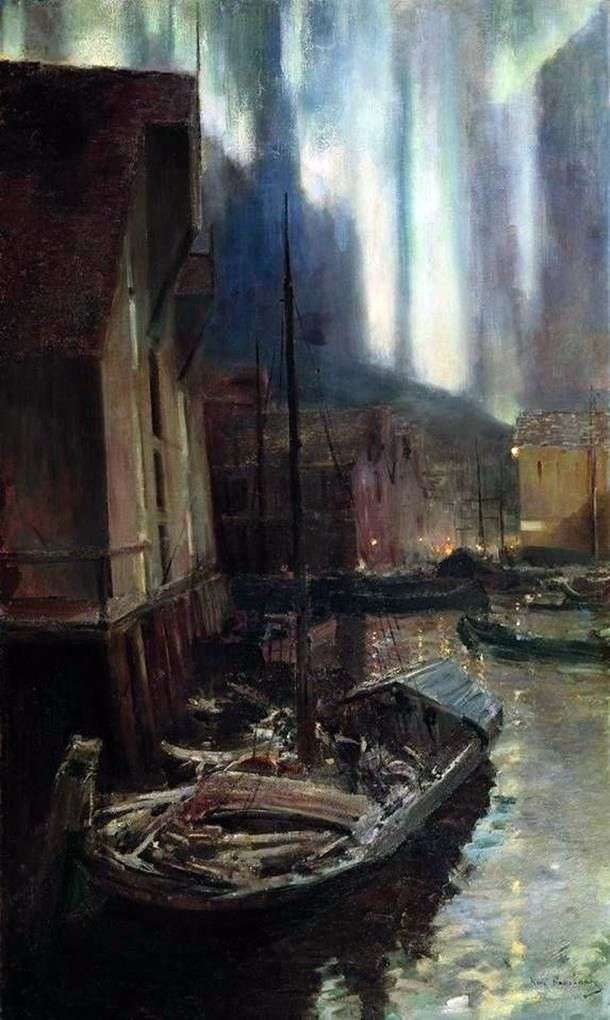 Hammerfest. The Northern Lights by Konstantin Korovin
Hammerfest. The Northern Lights by Konstantin Korovin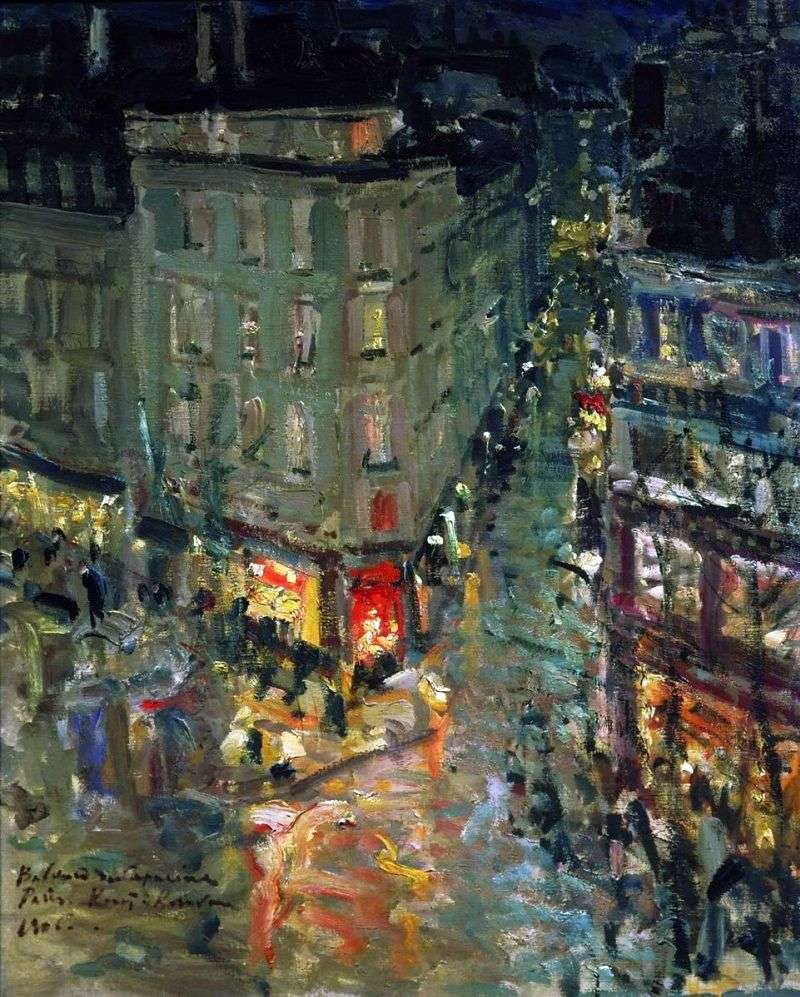 Paris. Boulevard Capuchinok by Konstantin Korovin
Paris. Boulevard Capuchinok by Konstantin Korovin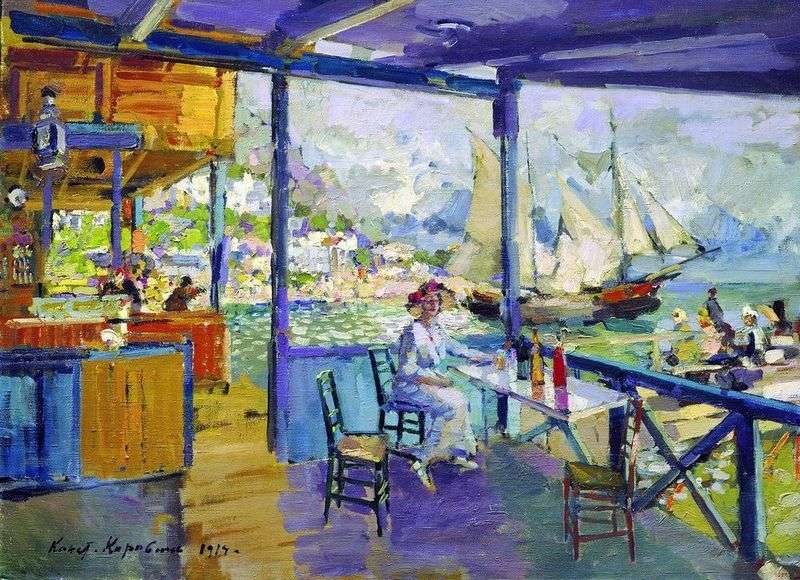 Pier in Gurzuv by Konstantin Korovin
Pier in Gurzuv by Konstantin Korovin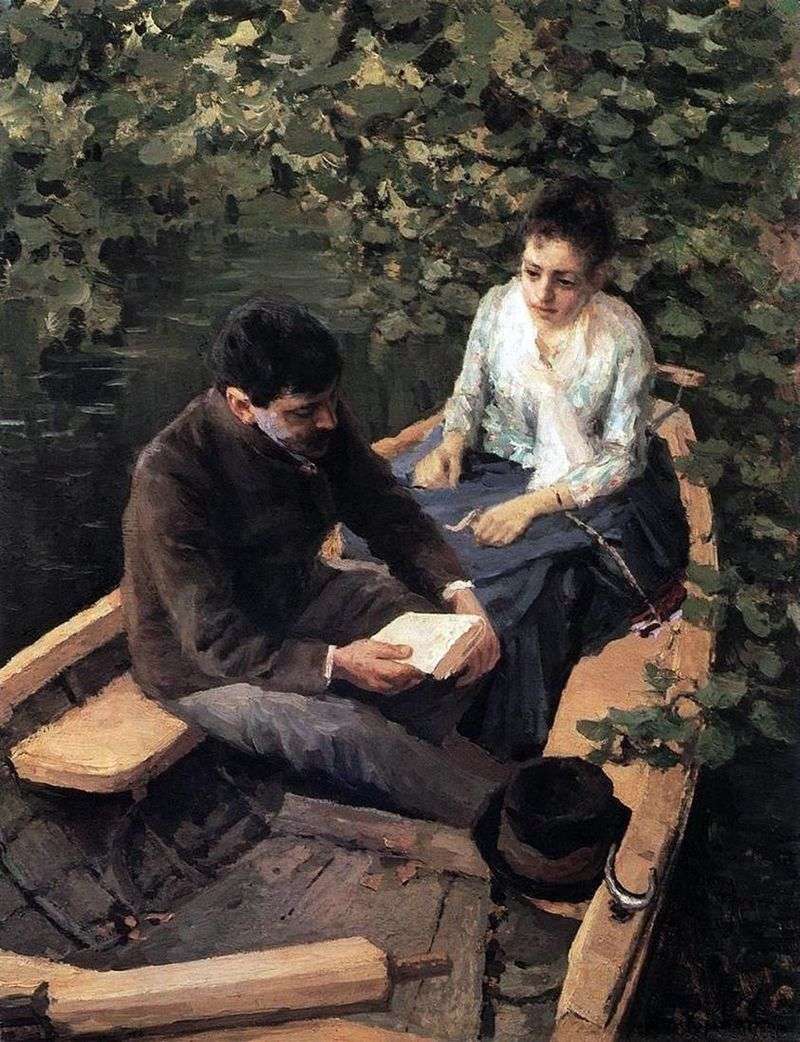 In the boat by Konstantin Korovin
In the boat by Konstantin Korovin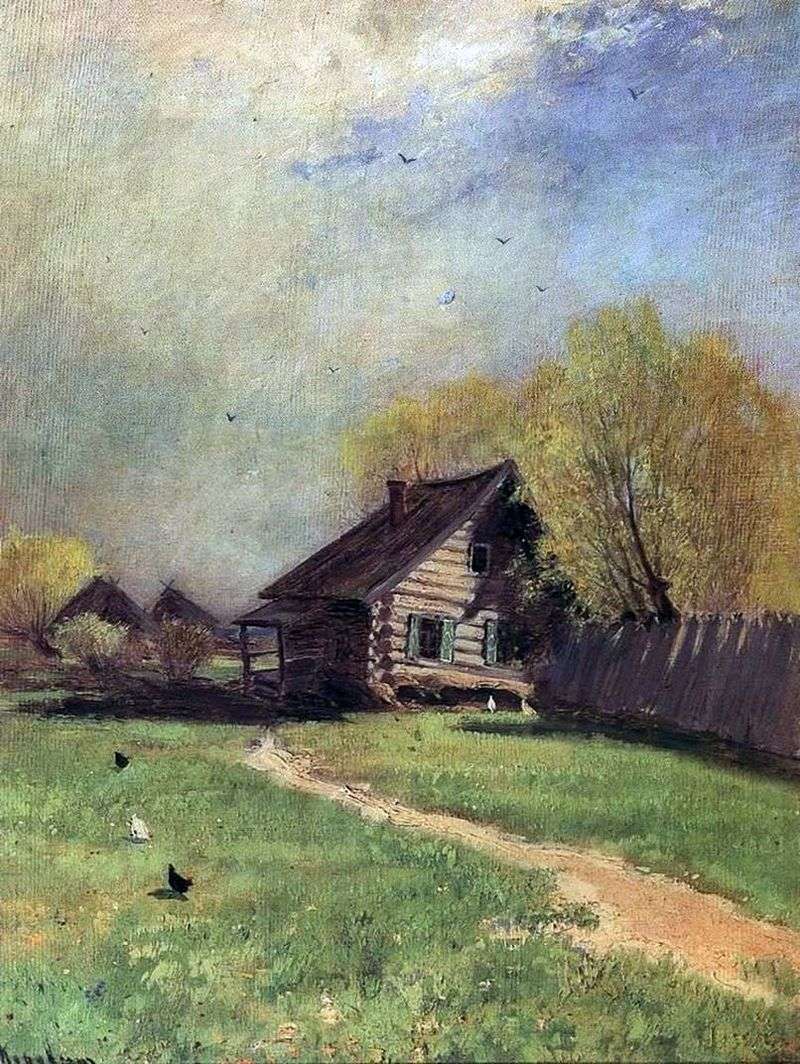 Early Spring by Konstantin Korovin
Early Spring by Konstantin Korovin